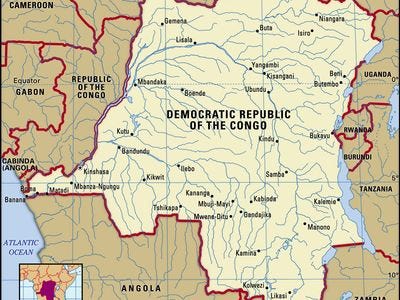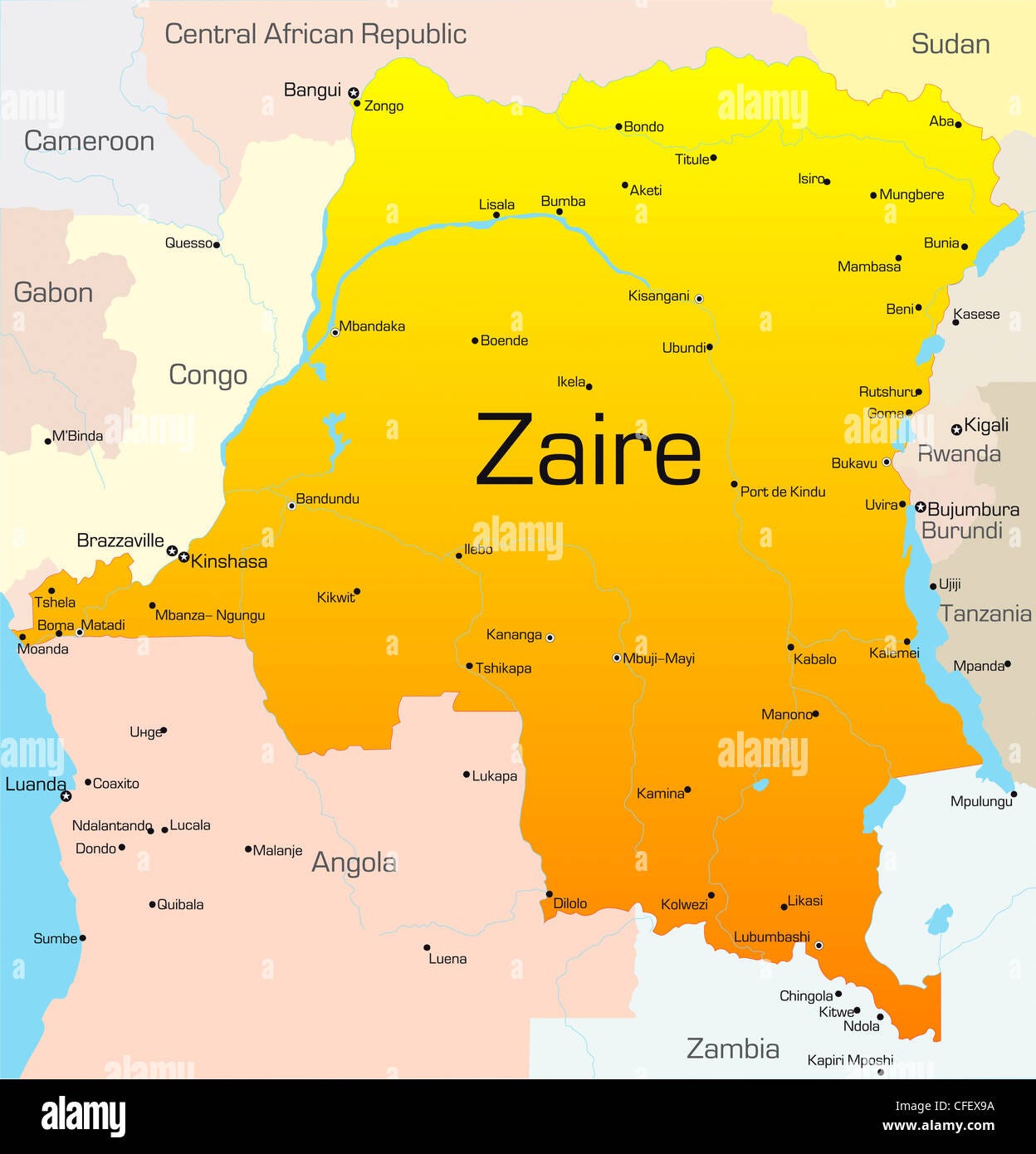Geopolitics Review - 3rd March 2025
Hidden Wars: The Democratic Republic of the Congo - The History
Contents
Introduction
The Geography of The DRC
The Congo Crisis and The First Congo War
The Second Congo War
Concluding Remarks
Other News In Geopolitics This Week
Bitesize Edition
Today, I will add another instalment to my Hidden Wars series as I explore the Democratic Republic of the Congo.
For decades, the DRC and its neighbours have existed in the same region with heightened tensions. This recently led to Rwandan rebels crossing the border and seeking to take territory in the DRC.
Before covering this conflict, I’ll explore the history of this region. History tells the story of how past events have contributed to the instability that continues to facilitate conflict in the region today.
Introduction
Last month, we saw an escalation in the eastern regions of the Democratic Republic of the Congo. Rwanda is also involved, and this has prompted UN resolutions condemning the recent violence and the UK has suspended aid programs to Rwanda.
Like many geopolitical issues, we have to explore the past before we look at the present. Today, we will cover the history of this region, which includes the Democratic Republic of the Congo, Rwanda, Uganda, Angola, and many other nations. Let’s dive in.
The Geography Of The DRC
In exploring the history of this conflict, I discovered links to many historical conflicts from the last 60 years. The history of conflict here even has ties to the Cold War! Before exploring these events, let’s cover the geography of this region.
The Democratic Republic of the Congo is the 2nd largest country in Africa, and the 11th in the world. It has a border with nine different nations, those being the following:
North - Central African Republic
Northeast - South Sudan
East - Uganda, Rwanda, Burundi, Tanzania
Southeast - Zambia
Southwest - Angola
West - Republic of The Congo
For how long has this region of Africa existed in this geographical state? The short answer is not for very long. Conflicts in the region over the last 60 years have reshaped this geographical structure of borders and nations. In exploring the recent history, we have to delve into the conflicts that led to these changes.
The Congo Crisis and The First Congo War
Of course, much of Africa has been under colonial rule throughout its history. While no less important by any means, I will start my coverage after the end of colonialism. This starts with the Congo Crisis of 1960 to 1965 after the Congo gained independence from Belgium. Immediately after independence, it was clear how little work had been done to prepare the region for life after colonialism. Tribalism and nationalism determined the timeline of events in the following months. A mutiny in the army was the initial spark of this conflict. Around this time, Katanga and South Kasai seceded with the support of the Belgians. These were two regions that existed at the time in Congo-Leopoldville that had been established as part of the Belgian Congo in 1914. This nation largely aligned geographically with the DRC today, and was named as such to distinguish it from The Republic of The Congo, which was also known as Congo-Brazzaville. They were named as such due to their capital cities.
The UN sent peacekeepers but refused to aid the central government. Hence, the Prime Minister of Congo-Leopoldville, Patrice Lumumba turned to the Soviets. This led to tensions with the President, Joseph Kasa-Vubu and split the Congolese government. This impasse was interrupted by future President Mobutu, who at the time was Lumumba’s chief military aide when he launched a military coup. The Soviets were expelled and Mobutu established a new government.
Lumumba was executed in 1961, but his supporters launched the Free Republic of the Congo. This group initially gained Soviet support, but the group was destroyed in 1962 by Mobutu’s government forces.
If we return to the secessionist of Katanga and South Kasai, by 1963, the UN took an aggressive stance against them. This was triggered by the death of UN Secretary-General Hammarskjold in a plane crash in late 1961. With UN support, the government brought Katanga and South Kasai back under their control. Katanga remained a province in this geography until 2015 when it was split into Tanganyika, Haut-Lomami, Lualaba, and Haut-Katanga. Between this history and 2015, the province was renamed Shaba, but more on that later!
The former leader of Katanga, Moise Tshombe, was brought in to lead an interim government before elections could be held. A group arose in the East named the Simbas and took a significant amount of territory. This gained territory was larger in Gizenga. Government forces gradually fought back and the Belgians and Americans got involved to save hostages from the Simbas. They were heavily defeated in 1965 but continued to exist in small cells until the 1990s.
Elections were finally held in March 1965, but after Tshombe and Kasa-Vabu entered into a political stalemate, Mobutu launched a second coup and took control of the entire country. This unofficially ended the Congo Crisis but started a new one under the leadership of Mobutu.
To highlight that this conflict was fuelled by the Cold War, the Soviets originally supported the government in 1960. However, when Lumumba fell, the Soviets supported movements such as the Free Republic of the Congo which supported Lumumba. When this movement was ended in 1962, the Soviets, Chinese, and Cubans supported the Simba Rebels. The United States and the Belgians entered the conflict on the other side in 1963, fighting against the Simba Rebels.
Around 100,000 people were believed to have been killed in this series of civil wars that ended with the entire country existing under the rule of Joseph-Desire Mobutu.
Under Mobutu, the DRC, which was renamed Zaire in 1971, existed under a dictatorship for decades. Cracks in Mobutu’s leadership that had widened over these years were first visible during the First Congo War. This conflict unfolded between 1996 and 1997 and was a trigger that marked the beginning of the end for Mobutu. By 1996, Mobutu was growing weak, as was Zaire after decades of dictatorship and corruption. The Rwandan genocide of 1994 had also contributed to instability rising in the region. The end of the Cold War also left the government bankrupt, with a lack of loyalty and support within the government itself. The first moves of the war were made when Rwanda invaded Eastern Zaire to target rebel groups. Uganda, Burundi, Angola, Eritrea, and Congolese rebels joined the Rwandan invasion, and Mobutu’s regime quickly collapsed. Laurent-Desire Kabila, a leader of the rebels, took over as President, and Zaire was renamed the Democratic Republic of the Congo. When Kabila sought to distance himself from the Rwandans and Ugandans who backed him, a second invasion erupted, marking the start of the Second Congo War.
The Second Congo War
Keep reading with a 7-day free trial
Subscribe to Geopolitics Explained to keep reading this post and get 7 days of free access to the full post archives.






